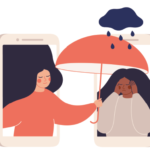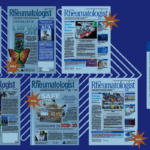Stephen Covey wrote the successful book The 7 Habits of Highly Effective People.6 Habit five of the seven habits is “Seek first to understand, then to be understood.” This core skill urges discovery of the meaning of why there is a relationship problem. We might begin by asking the patient what they think the problem is or what are they really worried about. When speaking with an upset patient, you need to understand the meaning and genesis of their feelings.
This article begins with a woman with a positive ANA test. Why did she become upset when you told her that she did not have lupus, a disease none of us would want? Perhaps she had a loved one who had suffered or died from lupus, and that was her chief concern. Delving into that history might help the physician understand why she is upset at what should seemingly be good news. Perhaps she wanted more of an explanation as to why she was having pain. Or, finally, did she pick up on your own ambivalence about caring for “only fibromyalgia”? Is that phrase somehow demeaning and dismissive triggering an emotional response?
It can be our own issues that are undermining the visit. Whenever a visit goes sour, one must search for the reason, whether it’s one’s own issue or the patient’s concern. This skill is core to avoiding or turning around a problem visit.
The final step in curing an encounter lies in building empathy. Good interviewing skills are the key here. Open questions help discover the true meaning of patient communication. Empathy is an emotion, perhaps best projected by good nonverbal skills. Body language and tone of voice gives the majority of meaning to your words in emotional situations. If this is accompanied by words that suggest empathy, one has a chance of turning a sour visit around. The verbal component consists mostly of efforts to understand the patient fully and to let the patient know what we have understood. Often we can use a reflection statement that summarizes the issues you heard. In the vignette described in this article, you might have delved into what the patient was really concerned about and then tried to address it with caring and concern.
Empathy is indeed the bridge that helps make the clinician–patient connection and helps avoid or even cure the difficult interaction. If difficult patient interactions are a puzzle to be solved, empathy is often the most practical solution.



